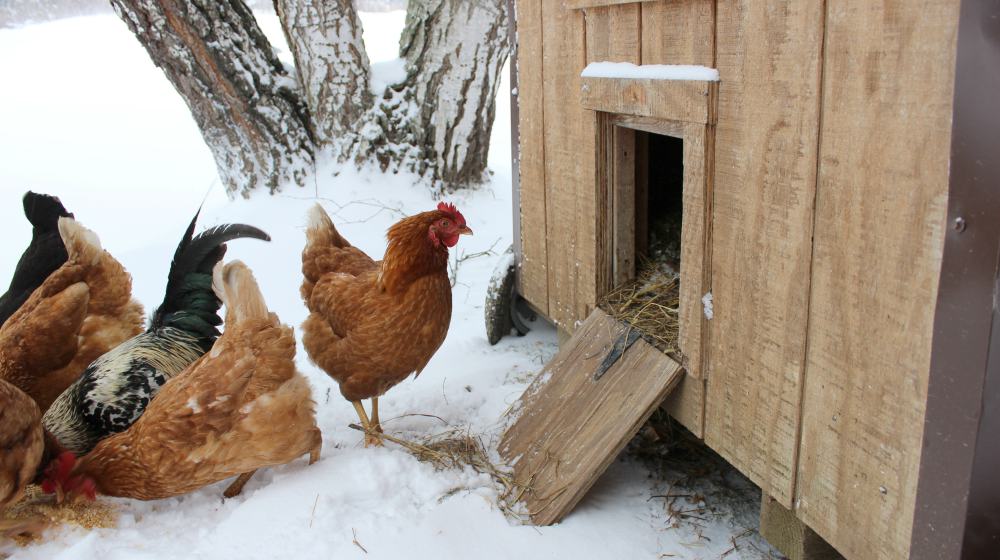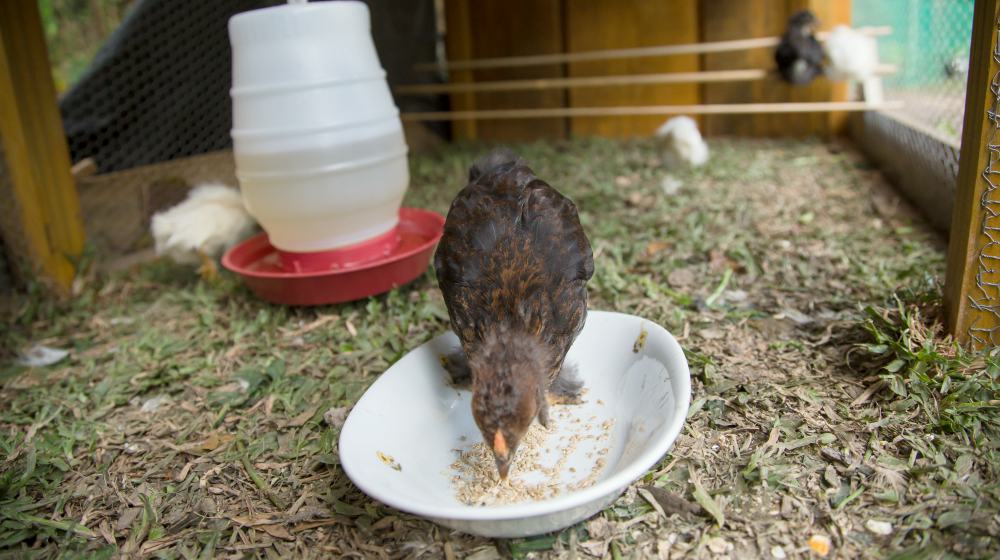Learn how to keep your chickens warm in winter with this easy-to-follow, step-by-step guide.
RELATED: Build Chicken Nesting Boxes From Recycled Scrap Materials
A Complete Guide on How to Keep Your Chickens Warm in Winter
Step 1: Install a Good Ventilation System
One common mistake poultry livestock owners commit is trapping their chickens in an air-tight coop. This might keep your chickens warm, but it'll also suffocate them.
So before setting up the various fixtures that your chickens need to stay cozy, you need to install a good ventilation system. The goal is to vent out warm, humid air and replace it with cool, dry, and fresh outside air to control humidity levels and prevent mold and grime buildup.
Place the vent near the coop's roofing so the cold air doesn't directly hit your chickens. Also, it should have a hatch you can easily open and close whenever you need to.
Step 2: Patch Up Holes
After installing a working ventilation system, it's time to patch up the holes that cause drafts. This ensures that outside air only enters the coop when you open the vent's hatch.
If you have a fairly new, well-built coop, then you might not find any holes or cracks. But if you've had your coop for a few years now, expect to spot some signs of wear and tear here and there.
Follow these steps for the best way to get rid of these gaps or openings:
- Drill a piece of plywood over the hole.
- Measure the crack you want to fill.
- Draw the measurements on a piece of plywood.
- Saw the piece out, and then patch it up it over the hole.
Apart from improving your coop's air quality, getting rid of gaps reduces the chances of water seeping in. Even the smallest cracks can easily spread and rot if they're contaminated with water.
Step 3: Insulate the Coop's Surroundings

A solid way to naturally trap heat in your coop is to insulate its walls, ceiling, and floor.
The idea here is to use heat-absorbing materials that'll increase the amount of thermal mass in your coop during the day. Then, it'll release the pent-up heat at night and serve as a natural heater.
Some good materials to use for insulation are waste compost, stones, and concrete.
Step 4: Apply the Deep Litter Method
Many poultry farmers apply the deep litter method because it both cleans and insulates the coop. Also, it's very efficient and doesn't use up too much of your time.
What you need to do is to layer the pine shavings, or whatever organic matter you use, on the floor. Then, once it's time to clean the coop, use a rake to lightly stir the shavings and fecal waste.
Combining organic matter and fecal waste creates a compost layer that serves as a habitat for good microbes. These microbes consume the harmful bacteria in chicken droppings that cause lice and mite infestations.
If done properly, the deep litter method should help you manage your chickens' waste with ease while providing a warm, cozy, and soft ground for your livestock to step on.
Note: Do not use cedar shavings because these are toxic to chickens.
Step 5: Build a Space for Roosting
Roosting is the act of congregating in groups before sleeping. This is how chickens keep themselves warm during the cold winter months.
As a poultry breeder, it's your job to give your chickens a clean, dry, and sturdy roost to settle in. Otherwise, your chickens won't be able to roost and gather properly, leaving them prone to cold-induced diseases.
Use wooden ladders or branches for your roosting perch. Avoid PVC and metal pipes because they're very slippery and might injure your livestock.
Also, elevate the roost at least two feet off the ground. Doing so will keep the chickens away from the cold floor while giving them a sense of security.
RELATED: Backyard Chickens Facts | 11 Chicken Facts For Homesteading
Step 6: Coat their Watles and Combs in Petroleum Jelly
Lastly, use petroleum jelly to protect your chickens from frostbite. Frostbite is the freezing of the muscles, skin, and underlying tissues. This is the result of exposure to extremely cold or windy environments.
Chickens can get frostbite on any part of the body, but they're most prone in their combs and wattles. So make sure you rub these areas with petroleum jelly at least once a day.
Just scoop some using your fingers and then gently massage the chicken. Do not use too much pressure or you might end up injuring them.
Note: The combination of cold and stress from frostbite might cause your roosters to become infertile. However, it's not incurable. Your rooster's reproductive capabilities should return once it recovers from the effects of the frostbite.
Extra Tips on How to Care for Chickens in Winter Season
1. Build a Small Coop
Chickens naturally heat themselves by roosting. In fact, ten chickens roosting generates about the same heat as one light bulb.
To maximize this natural heat, make sure you build a small, comfortably sized coop that's just right for your chickens. Do not create an oversized one or it will feel cold and breezy.
2. Do Not Use a Chicken Coop Heater
It has become common for livestock owners to use coop heaters to keep their chickens warm. Not only is this wasteful of energy, but it's also a fire hazard.
So instead, stick to natural insulation techniques that accumulate thermal heat.
3. Clean Food Bowl Regularly

Do not leave leftover food in your chickens' bowls. These put your coop at risk of pests, such as rodents, and stimulate moisture buildup.
4. Use an Electric Dog Bowl
A good way how to keep chicken water from freezing is to use an electric dog bowl. It's a self-heating bowl that keeps its contents warm.
Tip: To conserve energy, only use the electric bowl at night or if it's snowing heavily.
5. Feed Your Chickens Properly
Chickens need plenty of fats and carbs to keep themselves warm at night. Some good options to feed your chicken include oats, cracked corn, peanuts, and seeds.
These are just some of the ways how to keep your chickens warm in winter. Feel free to add other techniques and tricks to the process. Overall, what's important is to keep the coops clean and rid of anything that might make your chickens feel uncomfortable.
Here is a very simple holistic strategy to keep chickens warm from Backyard Blessings:
To make things more efficient, make a checklist of the things you need to do regularly. Also, pay extra attention to your chicken farm from December to February because these are the coldest months of the year.
Do you have any questions on how to keep your chickens warm in winter? Post them in the comments section below!
Up Next:

Great idea with stirring up the compost and adding another layer of straw. Good to remember. Thanks